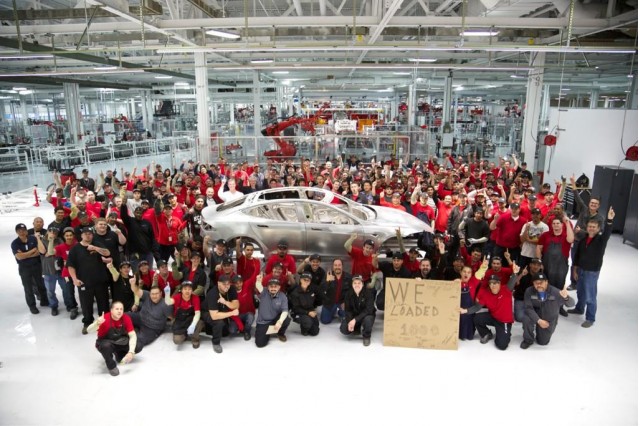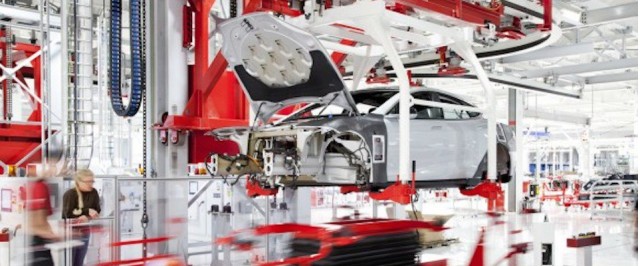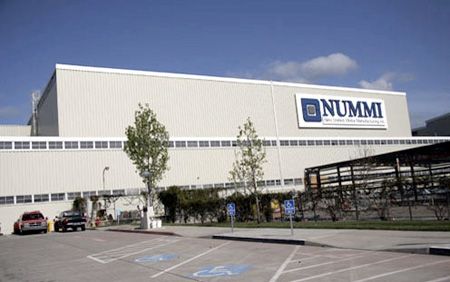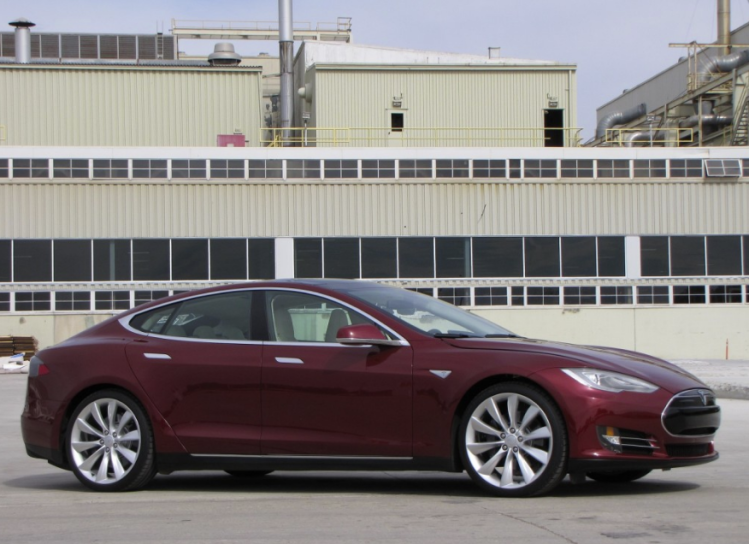Electric-car maker Tesla Motors has had many interesting and unexpected effects in its decade of existence.
It’s launched a series of electric cars with 200 miles or more of range, which remain—eight years after its first Roadster—the only such cars sold today that can make that claim.
Perhaps one of its more unexpected impacts has been on automaking in an unlikely place.
Back in 2009, when the company was evaluating locations in which to build its first mass-produced vehicle, it looked at sites not only in its home state of California but also other Western states.
The domestic auto industry was then in the process of shrinking back to a center of gravity in about five core states, among them Michigan and Ohio, and it has since added lower-cost plants in Mexico.
But after a meeting between Tesla CEO Elon Musk and new Toyota CEO and scion Akio Toyoda, Tesla abruptly changed course.

1,000th body for 2012 Tesla Model S on display at Tesla Motors factory, Fremont, CA, Oct 28, 2012
Toyota agreed in May 2010 to take a minority share in Tesla, while Tesla simultaneously agreed to buy Toyota’s shuttered assembly plant in Fremont, California.
That plant, the sole remaining high-volume car factory in the state, had been the home of New United Motor Manufacturing Inc., a joint venture between GM and Toyota.
That ex-GM plant had a capacity of half a million cars, but it went to Toyota after GM walked away from NUMMI during its 2009 bankruptcy and government-backed restructuring.
Six years later, Tesla says it is now building 2,000 electric cars a week at the Fremont plant.

Tesla Motors production line for Tesla Model S, Fremont, California
The company is also by far California’s largest automotive employer.
And its expanding production—with announced plans for a gigantic increase in output when its $35,000 Model 3 enters production—has given Tesla an important role in San Francisco Bay Area manufacturing.
The region that contains Silicon Valley has mostly moved its manufacturing elsewhere, to newer greenfield sites in other states and other countries.
But Tesla is a major exception to that, as the San Francisco Business Times notes, calling it “the most powerful engine in Bay Area manufacturing.”

NUMMI plant in Fremont, California
The regional business paper says “a high-tech ecosystem” of suppliers and technology companies is evolving around the Fremont plant, with almost 50 companies now and more on the way.
The article is worth reading. It includes interviews with suppliers, vendors, and fabricators on the effect Tesla has had on their business and what they see as its future potential.
The San Francisco Bay Area remains an unlikely place for large-scale manufacturing: land is brutally expensive, traffic congestion is epic, and industrial production is more heavily regulated in the state than virtually anywhere else in North America.
But if the Bay Area is to retain manufacturing—and the thousands of jobs that it entails—what better product to build than a zero-emission electric car?
This post first appeared on Green Car Reports.


